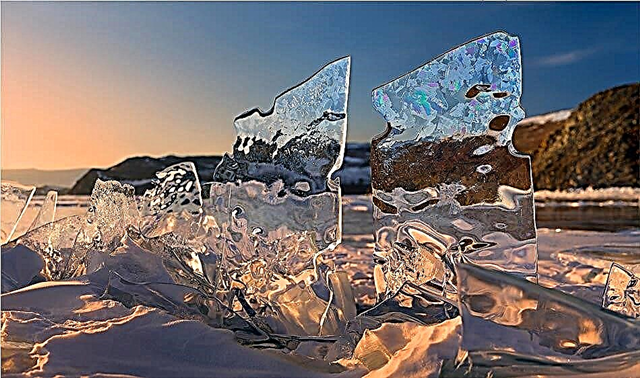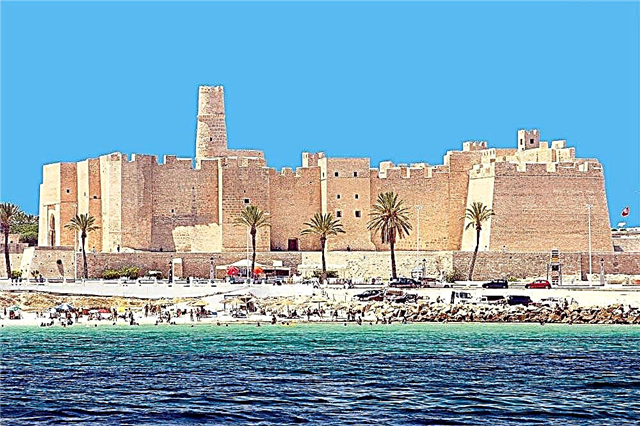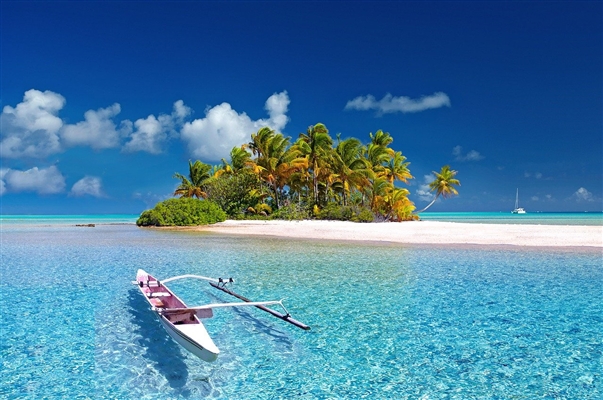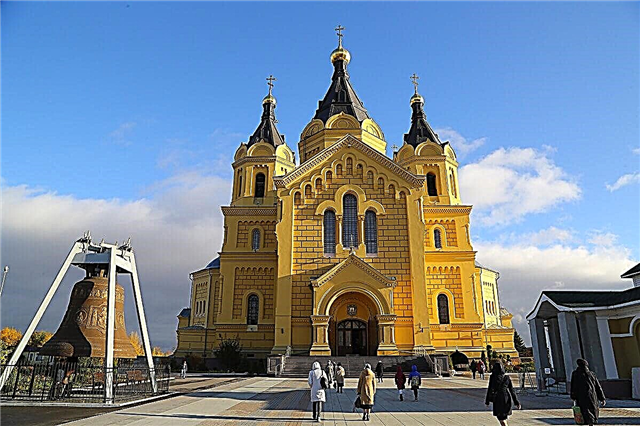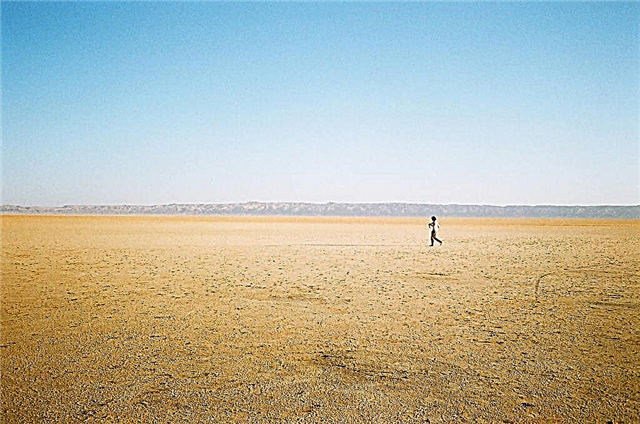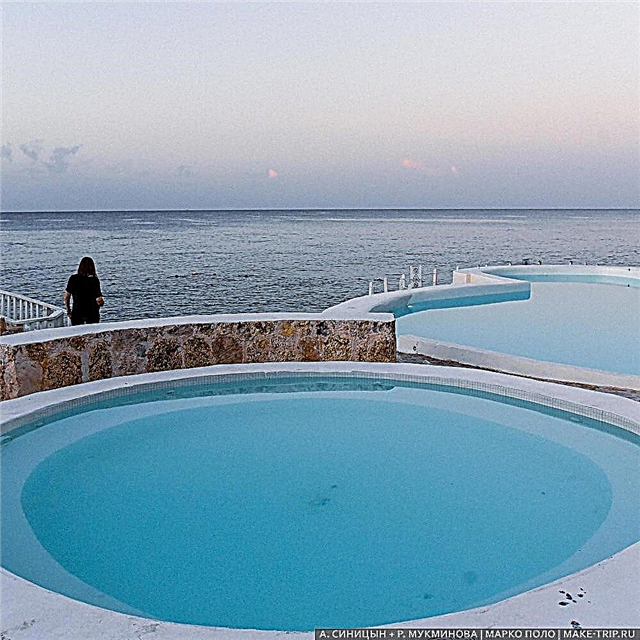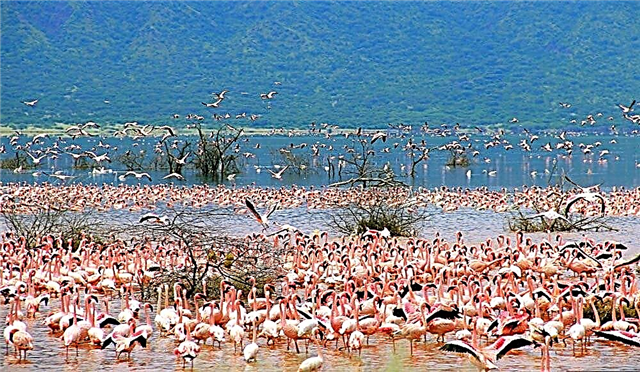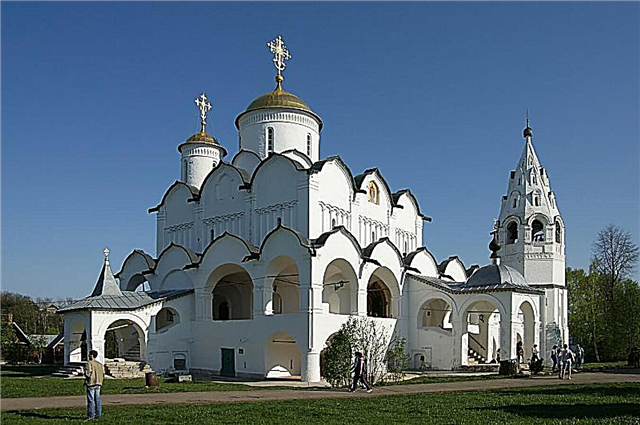It is not for nothing that Suzdal is called the pearl of the Golden Ring of Russia, in a relatively small area - only 9 km2 - more than 200 architectural monuments are concentrated. Most of them are ancient temples and cathedrals, the main of which is the Nativity of God Cathedral of the Suzdal Kremlin, built in the 11th century. No less interesting is the Intercession Cathedral of the nunnery of the same name, where objectionable representatives of royal and princely blood were exiled.
The city has preserved many paired architectural ensembles of summer and winter churches, such as the Resurrection and Kazan, Znamenskaya and Rizpolozhenskaya churches and many others. In recent years, many churches have been restored in Suzdal, which has given the city an even more elegant and well-groomed appearance.
The most famous churches and cathedrals of Suzdal
Theotokos-Nativity Cathedral
The majestic cathedral, crowned with five blue domes with gold stars, is the hallmark of Suzdal. It is located in the Kremlin, so the acquaintance with the city usually begins with it. The cathedral was built in 1222-1226. Now it is not only a functioning temple, but also a branch of the Vladimir-Suzdal Museum-Reserve. The unique gates of the 13th century, made in the technique of "fire gilding", as well as the world's largest outdoor lamp, have survived here. The cathedral impresses with its fresco painting and excellent acoustics.
Address: Suzdal, st. Kremlin, 20

Assumption Church
Presumably, the Church of the Assumption of the Most Holy Theotokos in the Prince's Dvor was built at the end of the 17th century. After a fire in 1719, it was rebuilt in the Naryshkin Baroque style, uncharacteristic for Suzdal. The temple had a tent-roofed bell tower, which was destroyed in the 20s of the XX century. However, in 2010 it was restored. In 2012-2013, after a large-scale restoration of the murals and the installation of a new iconostasis, the temple was re-consecrated.
Address: Kremlin, 12

Transfiguration Cathedral
The cathedral was built at the end of the 16th century in the tradition of Suzdal white-stone architecture of the 12th-13th centuries. Initially, it looked like the Cathedral of the Nativity of the Mother of God in the Kremlin, but later it was rebuilt. The walls are decorated with outdoor paintings and a traditional columnar belt. The interior painting of the walls was carried out in the 17th century by an artel of artists under the direction of Guriy Nikitin. The cathedral is part of the Vladimir-Suzdal Museum-Reserve and is a UNESCO World Heritage Site.
Address: Lenin, 135, bldg. 2

Intercession Cathedral
The massive three-domed cathedral of the monastery of the same name on a high plinth with an open two-story gallery was built at the beginning of the 16th century on the site of an older wooden church. Under the building of the cathedral is the tomb of the nuns of the monastery from the royal, princely and aristocratic families, who were exiled here at the behest of the king. The most famous of them is the wife of Vasily III, Solomoniy Samburova (in monasticism Sophia), canonized.
Address: Pokrovskaya, 76
Website: http://spokrovmon.ru

Nikolskaya Church
Built in the first half of the 18th century after a fire in 1719 as a summer church. Presumably, the temple had five domes, now it is crowned with one small dome on a high thin drum. The bell tower has a characteristic hipped roof in the form of the so-called "Suzdal pipe". After the revolution, the temple was closed. Divine services in it resumed in 1960 after restoration. The temple is depicted in the painting by B. Kustodiev "In Old Suzdal".
Address: Lebedeva, 17, bldg. one

Smolensk Church
The summer stone church in honor of the Smolensk Icon of the Mother of God was erected in 1709 on the site of the wooden church of the same name. Later, a warm winter temple in the name of Simeon the Stylite appeared nearby, forming a single ensemble with the Smolensk church. The massive building of the temple is crowned with five small onions, which gives it lightness and airiness. The restoration of the temple was carried out in 1960, and the temple was returned to the believers in 1999.
Address: Lenin, 148 A

Church of St. Michael the Archangel
The five-domed summer church in the name of the Archangel Michael was built in Mikhailovskaya Sloboda in 1769. Through the refectory, the temple is connected to a high bell tower in the classical style. The restoration was carried out in the early 2000s. Now the temple houses the Suzdal Orthodox School named after I. Arseny Elassonsky, where, in addition to secular education, pupils receive spiritual education.
Address: Mikhailovskaya, 58 A

Alexander Nevsky Church
The only church in Suzdal built in the pseudo-Russian style. It was erected at the beginning of the 20th century in the Mikhailovskaya Sloboda (now the village of Mikhali). The temple is richly decorated with kokoshniks, platbands, cornices and columns, and is crowned with a small tent with an onion dome. In Soviet times, the temple was abandoned, and only in the early 2000s it was restored and painted again. Currently, it belongs to the Orthodox school. Arseny Elassonsky, access to the temple is limited.
Address: Mikhailovskaya, 58 A, bldg. four

Church of John the Baptist
The Church of the Beheading of John the Baptist was built in 1720 on the site of the temple of the same name, which burned down in a fire in 1719. The temple resembles wooden cages of the 17th century. Under its southern wall is buried the locally revered saint, the holy fool Trofim, who lived during the time of Ivan the Terrible. The overhead cross of the Baptist Church has been preserved, which dates back to the beginning of the 18th century. After a comprehensive restoration of the temple, which took place in 2016, the cross was returned to the dome of the church.
Address: Lenin, 55 A
Website: http://ioann-suzdal.cerkov.ru

Cathedral of the Robe
The Cathedral in honor of the Position of the venerable robe of the Most Holy Theotokos was built in the 16th century. This is one of the first pillarless churches in Russian medieval architecture. Initially, it was crowned with three helmet-shaped domes, in the 19th century they were replaced with onions, and in the 30s of the 20th century they were completely destroyed, since an electrical substation was located in the building. The historical appearance was restored in 1964, and in the early 2000s the temple was reopened to parishioners. In 2015, the relics of St. St. Euphrosyne of Suzdal.
Address: Lenin, 79
Website: https://vk.com/riza_monastir_suzdal

Church of the Ascension
The five-domed church of the Alexander Monastery with a hipped-roof bell tower was built in 1695 on the site of two other churches. Funds for the construction were allocated by Tsarina Natalya Kirillovna and her son Tsar Peter Alekseevich. The temple did not have a "winter" pair, it was replaced by a warm northern aisle and a porch. The bell tower differs from the rest of the tent bell towers of Suzdal by the complete lack of decor. Since 2006, monastic life has been revived in the monastery.
Address: Gasteva, 26

Vasilievsky cathedral
The cathedral is an architectural monument of the 17th century. This is the only cathedral in Russia consecrated in honor of St. Basil the Great. The Vasilievsky Monastery itself is considered one of the most ancient monasteries in Suzdal. It has existed here since the end of the 11th century. Until 1899 the monastery was male, then became female until its closure in 1923. The revival of monastic life in the monastery began in 1995; before that, warehouses were located on the territory of the monastery.
Address: Kalinina, 1

Resurrection and Kazan churches
Cold Resurrection Church was built in 1720 on the site of a burnt wooden church. Together with her in 1739, a warm church was erected nearby, consecrated in honor of the Kazan Icon of the Mother of God. Before the revolution, the Church of the Resurrection of Christ was the main one in the city; it was here that all the bishops who visited Suzdal came first. At the end of the 20th century, when the churches were returned to the believers, their parishes were united, and the Resurrection Church received the status of a cathedral.
Address: Torgovaya square, 1

Church of Elijah the Prophet
Elias Church appeared in the bend of the Kamenka River in 1744. It stands on the edge of the Ilyinsky meadow, which is a natural landmark of the city.Soon, a small winter church of St. John the Theologian was erected next to the church, but it was demolished in the first years of Soviet power along with the bell tower and the refectory of the Elias Church. They were restored only in 2010. The bright and elegant temple looks great against the background of the surrounding landscape and is one of the hallmarks of the city.
Address: Pushkarskaya, 51

Tsarekonstantinovskaya church
The stone church was built in 1707 on the site of the dilapidated wooden church of Tsar Constantine. A low winter church was built near it in honor of the icon of the Mother of God "Joy of All Who Sorrow". From 1923 to 1976, the temple was closed. Since 1988, the relics of St. Euphrosyne of Suzdal and Euphemia of Suzdal. In 2011, the temple was returned to the Russian Orthodox Church. Five figured domes give the cathedral lightness and create a sense of festivity.
Address: Suzdal, per. Zaprudny, 2 B

Sorrow Church
A warm church in honor of the icon of the Mother of God "Joy of All Who Sorrow" was built next to the cold Tsarekonstantinovskaya church in 1750-1787. In its place there used to be a wooden Church of the Exaltation, which was dismantled due to its dilapidation. The parishioners collected funds for the construction of the stone church. The bell tower of the temple ends with a “pipe” tent, typical for Suzdal. In 1952, the Sorrowful Church was restored, but it was returned to the use of believers only in 2009.
Address: Zaprudny, 2 A

Church of Cosmas and Damian
Kosmodamianovskaya winter church was built in 1725 on the site of an old wooden church. Due to the fact that the temple was built on a hill, it can be seen from afar. It was built in the traditions of 17th century architecture, but it has an asymmetrical composition. The cubic building of the temple is practically devoid of decor and is complemented by the strict forms of the bell tower with a concave tent-"pipe". Divine services in the temple were resumed in 2010.
Address: Krasnaya Gorka

Kresto-Nikolskaya church
Built in 1770 on the site of the wooden cross chapel in memory of the deliverance of Suzdal from the plague of 1654 (plague), which killed almost half of the city's inhabitants. In the 19th century, a bell tower with a spire and a refectory were added to the temple. The temple has a two-tone design and looks different from opposite sides, although the building was originally painted in red. In 2009, the Kresto-Nikolskaya church was returned to the believers.
Address: Lenin, 65 A

Church of the Sign and the Robe of the Robe
The warm Church of the Sign of the Most Holy Theotokos was built in 1749 on the site of the wooden church of the same name. And 30 years later, a small "cold" Church of the Robe was erected next to it. Thus, the existing ensemble was formed in the 18th century. Funds for the construction of the Church of the Position of the Robe were allocated by the local merchant Zubkov. Between the temples, there is a separate bell tower, on which there were 10 bells in the 19th century. In 1991, the churches were restored and transferred to the Russian Orthodox Church.
Address: Lenin, 20

Epiphany and Christmas churches
Both churches were erected in the 18th century in the Kozhevennaya Sloboda of Suzdal on the banks of the Kamenka River. They were built at the expense of parishioners on the site of dilapidated wooden temples. The architectural appearance of the "summer" Epiphany church combines the styles of the 17th and 18th centuries, and the "winter" Christmas Church has features of wooden cages with a gable roof. In 2018, the restoration of both churches was carried out.
Address: Schmidt, 7


